Athens: 6 Insiders Reveal Their Top Picks
Six Athenians tell us about their...
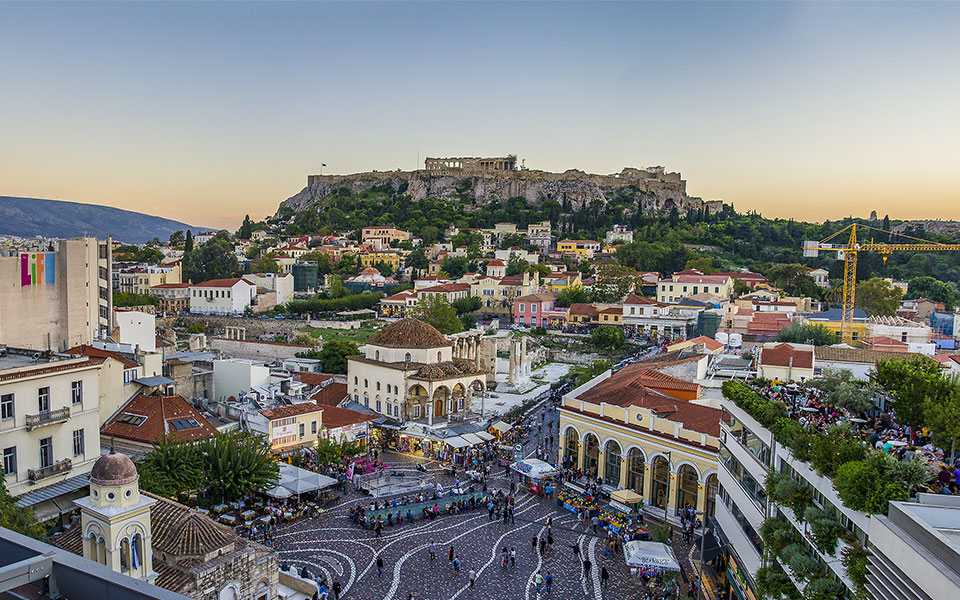
Monastiraki Square, the beating heart of downtown Athens.
© Shutterstock
Monastiraki, on the blue line between Syntagma and Kerameikos stations, and on the green line between Thisseio and Omonia is probably one of the most popular places for visitors and locals alike to visit. Packed with stores, eateries, and bars, it’s one of the city’s all-day hubs.
It is also the perfect launching pad to explore some of Athens’ most impressive archaeological sites, such as Hadrian’s Library, the Roman Agora, and the Tower of the Winds. Indeed, within the station itself is an archaeological site that was unearthed during the works to build the newer Monastiraki station: a naturally lit, walled segment of the ancient Eridanos River, which flowed (and still trickles) from Lycabettus Hill and ended in Kerameikos Cemetery.
Upon stepping out of the Monastiraki Square exit, especially during the weekend, you’re likely to come across a loud Hip Hop dance or African drum music performance by street artists and feel yourself pushing through crowds of people who are hanging out with friends, selling bracelets, waiting for dates, or following a tour.
Leading off from here are Ifestou Street, where the flea market is, Mitropoleos Street, where you’ll find some of the city’s most popular souvlaki restaurants, and the iconic Ermou Street, the city’s main “shopping boulevard” lined with clothes, shoe, beauty and food stores, and a few cafes.
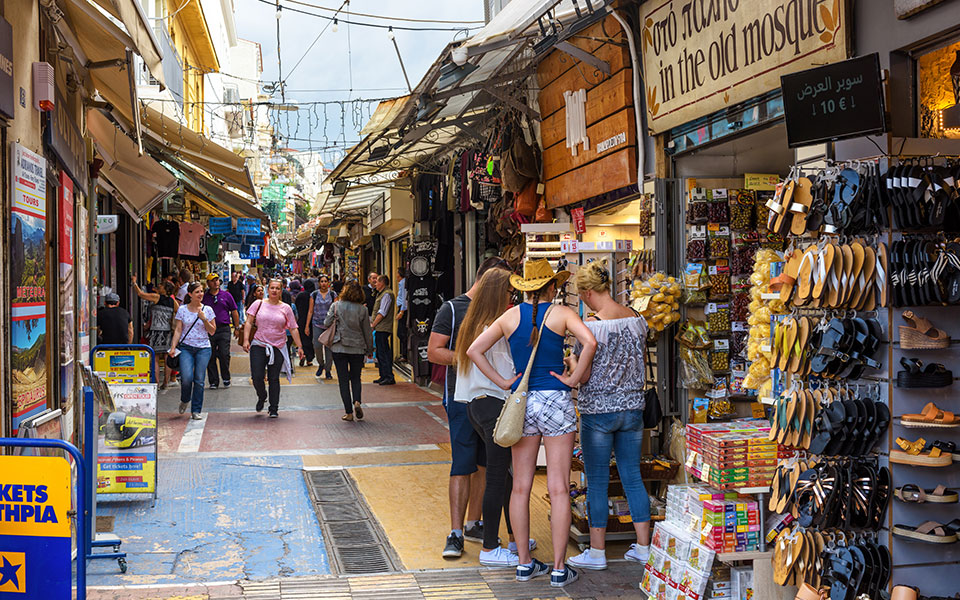
© Shutterstock
On Monastiraki Square you’ll see the 10th-century Church of the Virgin Mary Pantanassa, once the katholikon (cathedral of the diocese) of the long-gone monastery that the square gets its name from. An Ottoman structure, the Tzisdarakis Mosque, which was used in modern times to house exhibits of the Museum of Modern Greek Culture but has been closed since 2015, is also immediately visible.
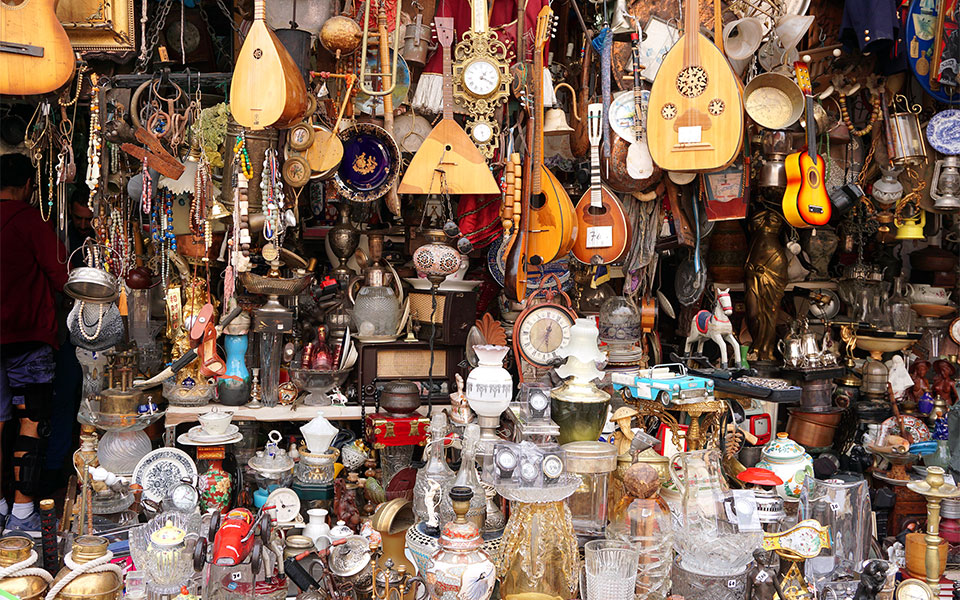
© Shutterstock
On a street named after Ifestos (Hephaestus), the ancient god of metalworkers, the “Youssouroum” or Monastiraki Flea Market sprawls out, selling an incredible array of sandals, bags, shoes, jewelry and jewelry-making accessories, and a cornucopia of other touristy trinkets.
If you’re looking for antiques, head to the flea market further up from the square, up Ermou Street, and to the right onto Avyssinias Square, where, apart from a restaurant and a few cafes, merchants sell restored furniture, crockery, and home décor items from the past century or two. This place is particularly lively on Sundays, when a full market is set up for antique buyers and dealers.
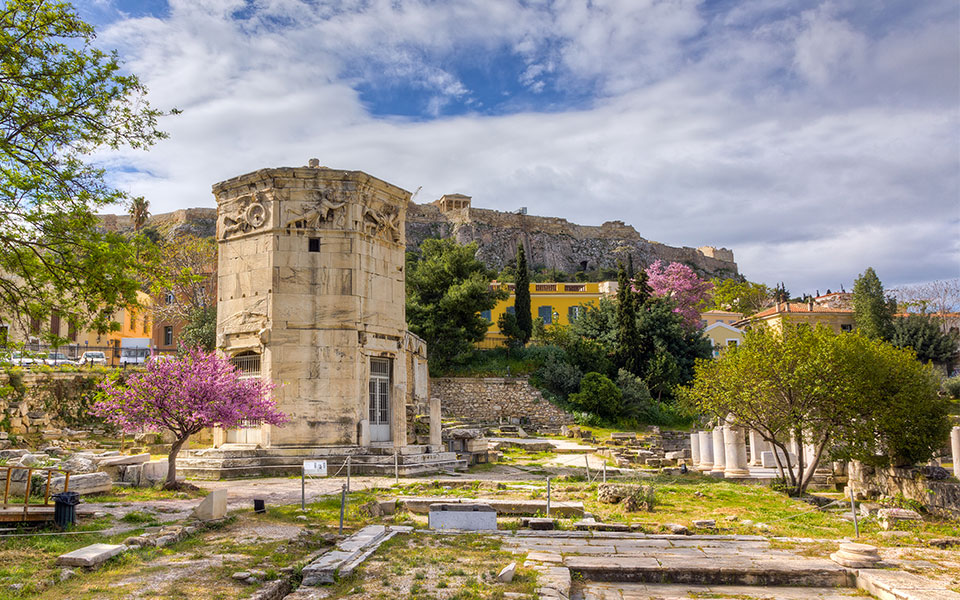
Tower of the Winds
© Shutterstock
Heading towards Pandrossou Street, you’ll soon come across Hadrian’s Library, built as an offering to the city in 312 AD by the Roman Emperor Hadrian. Continuing further, you’ll come across the Roman Agora. Once decorated with an Ionic Arcade and containing shops of all kinds, this is where people bought their daily necessities, discussed politics, and struck business deals.
Within the site of the agora is the octagonal Tower of the Winds. Made of Pentelic marble and engraved with eight gods of the wind, the “Aerides” as they were known, it features a water clock, sundials and a wind vane, and was thought to originally function as a clock tower. In early Christian times it was used as a bell tower.
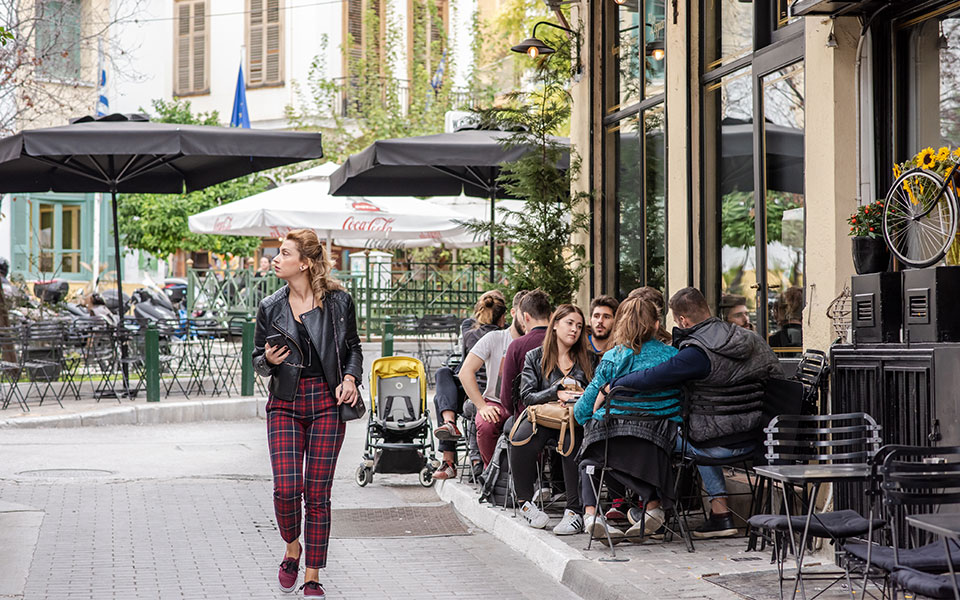
Psyrri
© Shutterstock
Monastiraki station’s other exit is on Athinas, a bustling street full of stores selling the most fascinating variety of things, from cowbells and extra-large clothing to caviar and everything a DIY-lover could dream of. It’s also where the bustling yet charming Varvakeios Municipal Market is located.
Walking along Athinas and heading down any of the streets that branch off it, you’ll be in Psyrri. Here is a whole other world to discover, with yet more eclectic clothes stores and ice cream and food shops to discover, including ethnic food restaurants and street food, as well as the city’s largest choice of spice shops, run mainly by South Asian, Middle Eastern and African immigrants who have introduced exotic ingredients to Athens (these are mainly on Evripidou and Menandrou streets). Herbal shops, plant, pet and pastrami stores, and old-school barber shops all vie for space in this edgy downtown neighborhood.
All told, Psyrri, which leads to Omonia, has more of a hipster ambiance than any other area in the city, and is well worth visiting, but ideally by day.
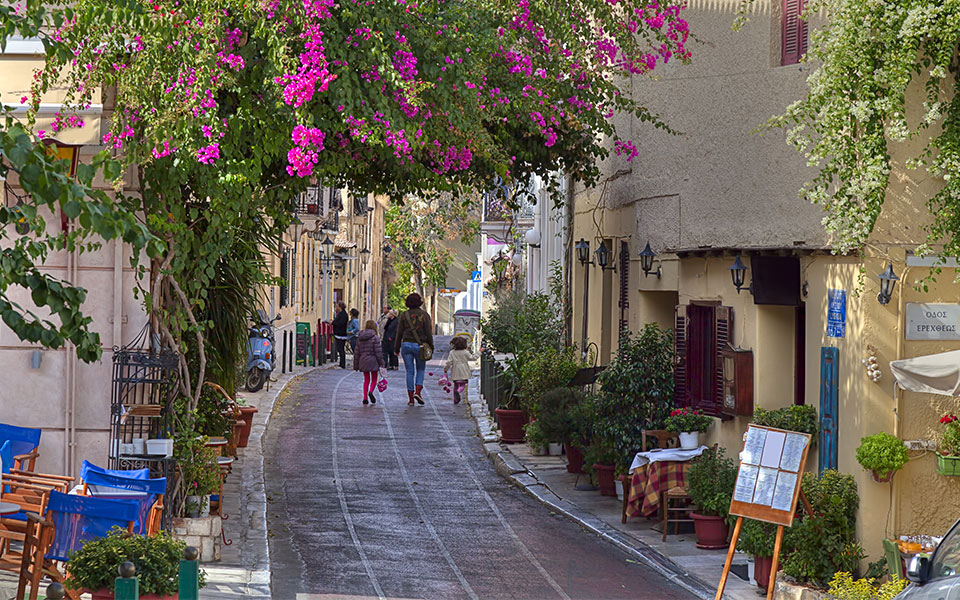
© Shutterstock
Monastiraki metro station is an excellent gateway for reaching Plaka, which is only around 10-15 minutes’ walk upslope from the station. Heading from Monastiraki Square in a southeasterly direction, you will reach the heart of Plaka via Adrianou Street (a few small streets up from Hadrian’s Library) where rows of tourist shops and eateries of various kinds are located, as they are on the surrounding streets such as Ragava, Kidathinaion, and Monis Asteriou, as well as small hotels, a traditional style hammam, antique shops, galleries, cute cafes and many museums.
Don’t miss out on the Museum of Greek Folk Musical Instruments, the Frissiras Museum, the Eleni Marneri Gallery, the Jewish Museum of Greece, and the Benizelou Mansion (or as it’s colloquially named, “the Oldest House in Athens”).
From Plaka, as you head towards the Acropolis and Dionyssiou Aeropagitou Street, it’s well worth taking a steep but highly scenic walk (and especially very early in the morning when the city is still sleeping or at sunset when the sky sets ablaze with colors) through the picturesque Anafiotika neighborhood, created by settlers from the island of Anafi in the mid-1800s.
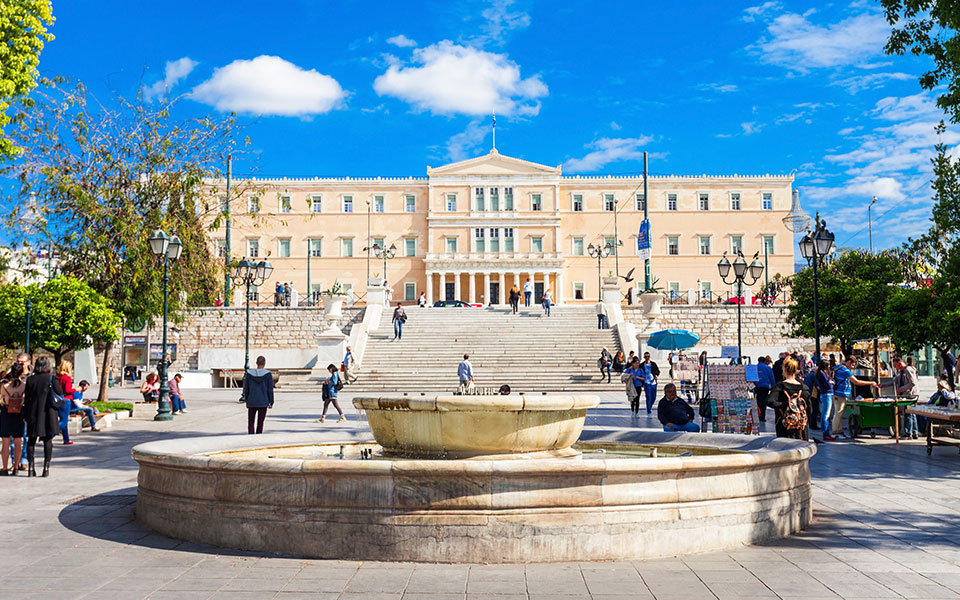
© Shutterstock
Heading up Ermou Street from Monastiraki Square you’ll reach Syntagma Square, from where you can cross over to the Parliament Building to observe the Changing of the Guards. Along the way it’s well worth exploring the rows and rows of stores, cafes and hotels along the way. It’s also a great idea to let yourself get a little lost by meandering off into the many narrow side streets branching out from Ermou, where you’ll find interesting stores on streets like Perikleous, Kolokotroni and Romvis, selling everything from crystals and fossils, Indian home décor items and Japanese incense to textiles.
Heading up Mitropoleos Street you’ll pass Athens’ “souvlaki central,” as several of the oldest and most well-known souvlaki restaurants are located here, along a part of the road packed with tables. A little further up you’ll arrive at the historic Metropolitan Cathedral of Athens, which is dedicated to the Annunciation of the Virgin Mary and houses the Byzantine-era holy relics of St Filothei, Athens’ patron saint.
Six Athenians tell us about their...
Recycling is an age-old tradition in...
Trace St. Paul the Apostle’s journey...
A natural spa by the Athenian...